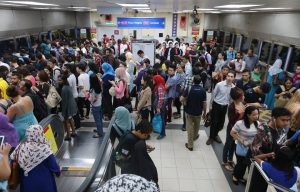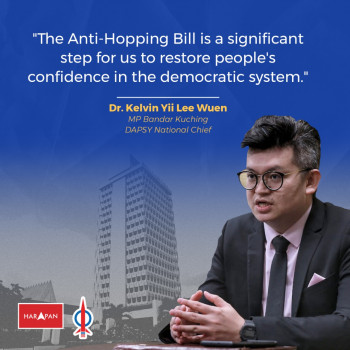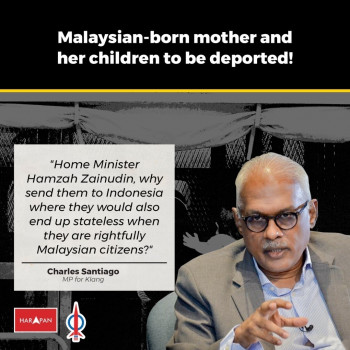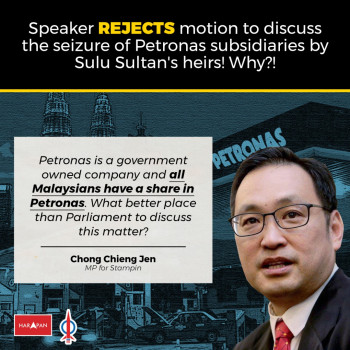By Pauline Wong

A scene from inside the LRT station when a breakdown last month caused massive congestion and frustration. (pic taken from says.com)
KUALA LUMPUR, Oct 5: There is a tragic and human cost to pay for poor public transportation, and it goes beyond just financial or getting in late to work, a DAP MP has said.
DAP Kluang MP Liew Chin Tong in a recent forum said that most do not look into the lives that have to be paid when public transportation is inadequate and inefficient.
“There is a human cost to the way we manage and govern public transportation; we have 11 million cars and motorcycles in this country, with more than 6,000 deaths a year on the road, and two-thirds of that are motorcyclists,” said Liew at the ‘Moving Cities: The political economy of transportation’ forum yesterday.
Liew, who is also DAP National Political Education Director, said he met a constituent in Penang who was fully paralysed in a motorcycle accident some 16 years ago.
“Sixteen years later, his son was involved in a motorcycle accident also, and was injured very badly,” Liew said.
“(This is why) Anytime the choice is made to take a motorcycle instead of public transportation, there is a human cost. We need to now think beyond the current structure,” he said.
The forum, which is part of Refsa’s Urban Series, also saw Land Public Transport Commission (SPAD) Chief Development Officer Dr Prodyut Dutt and Penang Institute KL General Manager Dr Ong Kian Ming as speakers.
Liew said some suggestions to think about to improve public transportation is the decentralisation of power to the state, in order to allow the state governments to play a bigger role in managing public transportation, and explore new ideas on how to resolve the issues that plague the nations’ public transportation system.
Last month, the Light Rapid Transit (LRT) Kelana Jaya line suffered two massive breakdowns during peak hours, which resulted in thousands of passengers evacuated and having to walk along the tracks to get out of the stalled trains.
Many netizens, as the pictures of passengers walking the tracks went viral, criticised the operator of the LRT, Prasarana, for putting the lives of their passengers in danger.
It is also no secret that while public transportation services have improved with new trains and new lines added, it is far from being the top choice for Malaysians to get around.
Dutt said, some one million riders use public transportation each day in the Greater Klang Valley area, 600,000 of which use the rail system, and the rest use buses. With a population of just over 7 million, these figures pale in comparison to London, which has a population of 8.6 million but every day, over 3 million users take the Underground alone — not including the other rails such as the Docklands Light Railway or the Overground, nor including the riders on some 4,500 buses which serve London.
“What happened to public transportation being the main source of public transportation? It is because our urban form has changed,” Dutt said.
As cities grow at a sprawl, Dutt added, most bus operators do not follow suit because of commercial reasons. Without more routes, there are less riders, and hence less fare revenue. People then switch more to private vehicles, and once the switch is made, it is unlikely that most will return to using public transport.
Describing it as a “vicious cycle” he admitted that one major problem with the public transport system is the lack of connectivity to the rails, since feeder buses are not up to par as yet.
However, he said the SPAD and federal government are making serious moves to improve bus use and the bus system in the other capital cities across Malaysia.
Meanwhile, Ong, who is also DAP Serdang MP, said the issue of public transport financing is a challenging and difficult one.
“There are more failures (in public transport financing models) than successes, unfortunately, and governments expect public transportation to be a write-off,” he said.
In terms of financing, he said questions need to be asked of the upcoming Mass Rapid Transit (MRT) project and of Prasarana on the ways it will fund its capital expenditure and operational expenditure (capex and opex).
“What is the strategy going forward for MRT and Prasarana to finance its capex and opex, and what are the possible sources of non-fare revenue, and what impact will this have on the fare structure of LRT and MRT?” he said. – The Rocket



